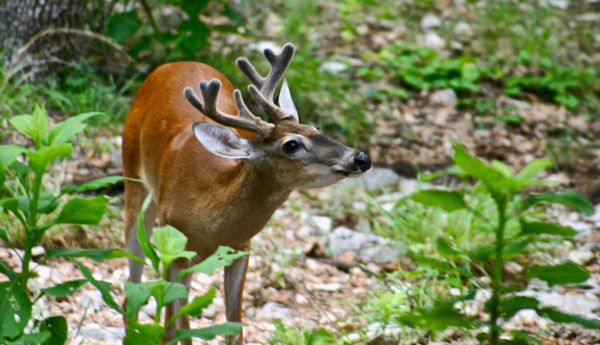
While it may be a few months from opening day of deer season, experienced hunters know it’s already high time to begin prep. From sighting in one’s bow or rifle to scouting game trails, work in the offseason equates directly to in-season success. For those who hunt on their very own homestead, this is doubly true. A good food plot can exponentially increase one’s chances of success, from pre-rut all the way into the late season. Here are a few tips and plant ideas to get you started.
Prep
No matter the task, preparation remains the most important thing. If you just drop seeds on grass, you won’t have a whole lot of luck. Start by spraying your plot with a weed and grass killer, to clear the area. Once the unwanted vegetation is gone (give it about a week), apply a 13-13-13 fertilizer over all the dirt.
What to Grow
Brassicas
It won’t take much more than a cursory Google search to determine brassicas ain’t exactly a big secret. Whitetails LOVE them, due to their high glucose content. At this point, you’re probably wondering, “what the hell is this guy talking about? What’s a brassica?” As it turns out, brassica is just a fancy name for a genus of plants in the mustard family, including turnips, radishes, cabbage, broccoli and the like. The best part? All that glucose gets activated after the first frost, meaning deer will wait until then to hit it, when you’re likely already on the hunt. For this reason though, brassicas are better used in northern states where it frosts. The one exception to this is turnips, which don’t require a front to boost their popularity.
Hardy growers, minimal tilling is required to grow these plants. Just sow seeds about ¼-inch down, and tamp them either with your boot, or the tires of your ATV. That’s all the start they need for successful growth. Best part? Brassicas reach maturity in 60-90 days, so this makes a great plot for you procrastinators out there.
Cereal Grains
Much like your kid cousin, deer love their cereal. Unlike that little rugrat however, they aren’t quite so partial to Cap’n Crunch. To the contrary, grownup deer like grownup cereals, such as oats, wheat and rye. As these don’t need a frost to attract deer, they are more conducive to early seasons and deep-South environs. You can also plant them a little later, so they come up after your brassicas are gone, making them a useful late-season lure.
For rye and oats, the planting process is virtually identical to brassicas, though they would benefit a little more from actual cultipacking instead of simply running them over. If planting rye on its own, mix in some clover, to make it a little more palatable for the deer. For wheat, dig a little further down, to about a half inch. If the deer don’t naturally do it for you, make sure to keep the plot mowed to a height below six inches for oats and wheat.
These are some good basics to get you started, so get out there and get planting! When fall rolls around, you’ll thank me.
A humble homesteader based in an undisclosed location, Lars Drecker splits his time between tending his little slice of self-sustaining heaven, and bothering his neighbors to do his work for him. This is mainly the fault of a debilitating predilection for fishing, hunting, camping and all other things outdoors. When not engaged in any of the above activities, you can normally find him broken down on the side of the road, in some piece of junk he just “fixed-up.”
